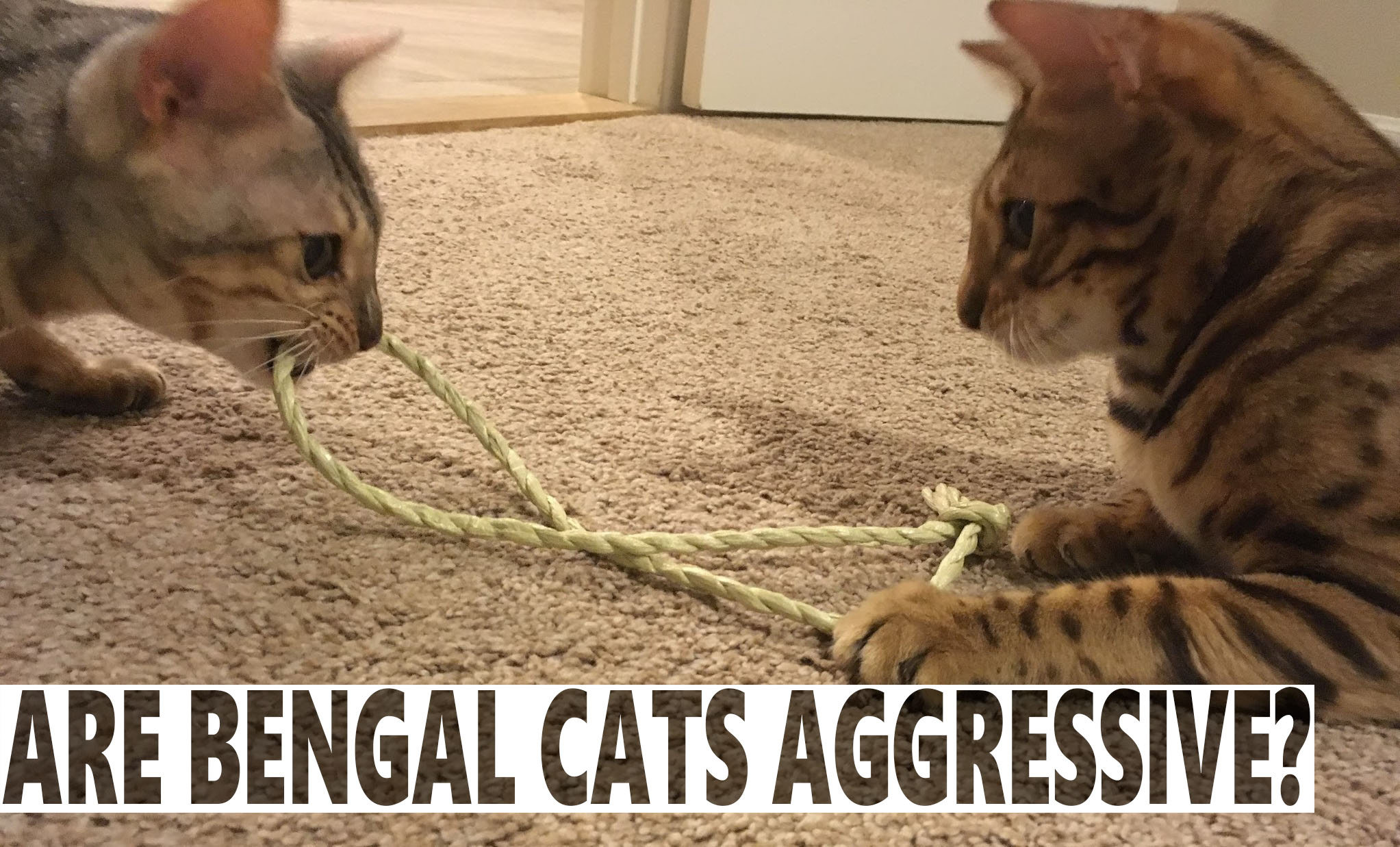Bengal cats are agile and graceful, and are considered to be quite exotic in looks; their strong, muscular bodies, their overall larger size, as well as their spotted coat imply a wild cat fit for a jungle.
They are, however, a highly sought after breed of domestic cats.
Created by crossing an Asian leopard cat and domestic shorthairs. Still, the fact that they are descendant from a wild Asian leopard cat means they are not exactly ordinary lap cats; their personality can be quite challenging at times.
The question most prospective owners want answered is whether these Bengal cats are aggressive due to their wild ancestors?
These are the points to consider when thinking about adopting a Bengal cat as a pet, concerning the matter of their potential aggressiveness:
Occasional destructive or unconventional behavior
Bengal cats, when bored, can indulge in various activities to amuse themselves, but not all of those activities will be welcomed by their owners.
Bengal cats are not a good choice for working people who are often absent from the house.
That's because the cat's aggressiveness towards the environment can stem from their boredom and loneliness.
Considering that these cats are quite intelligent and active, they can showcase these traits by climbing high places in the house, turning a light switch on and off repeatedly and knocking various items over onto the floor.
In order to detract them from doing so, the owner should consider buying puzzle toys to keep this intelligent cat occupied.
They may appear to be aggressive when they start scratching furniture or the carpet, but this is natural for Bengal cats, as well as other cats. So all the owner needs to do is supply the cat with a suitable scratching post.
A Bengal co-living with other animals may be difficult
If you already own a pet, introducing a Bengal cat into your home may be challenging. Considering that they love water and playing in it.
Bengal cats are on occasion known to practice fishing in aquariums and garden ponds, so fish are at risk from them.
Bengal cats are also known to be rather protective of their own territory, but are also known to seek out other cats and enter their homes to attack and hurt them.
Having this in mind, Bengal cats may be a good choice for a rural area in which they will not have competition in the form of other cats.
Some believe its not a good practice to house two or more Bengal cats, as they may feel antagonistic towards each other which can lead to mutual attacks, and these attacks are often far from playful.
However, this is not always the case and Bengals can get along very well with each other.
Interestingly, Bengal cats do seem to get along well with dogs, and they like to play with them, so pairing this cat with a dog may be a winning combination.
Owners must always have the Bengal cat's potential for aggressive behavior in mind when pairing their pet, in order to avoid problems.
Bengals response to discipline
Bengal cats may not react to all attempts to be disciplined very well. Their aggressiveness may start showing because they have not been properly disciplined or socialized.
However, no matter the problem in question, it is never a solution to hit the cat EVER! That will destroy the trust from its perspective in your pet-owner relationship.
Rather than turning to physical punishment, owners can try clapping their hands, raising their voice or spraying their Bengal cats with water in order to show them that what they just did is unacceptable.
Bengal cats may also bite their owners, or jump at them, but this is usually a sign that the cat is bored or looking for attention.
When they are satisfied, these cats are friendly, affectionate and playful. If a certain problem persists and is more serious, owners can consult a specialist in behavior therapy.
In conclusion, Bengal cats can show signs of aggressiveness, but they can prove to be extremely fun pets, when owners learn how to properly handle their sometimes challenging personality.
This can be achieved by limiting or monitoring the Bengal cat's interactions with other animals, or bringing a Bengal cat into an area in which they are no other cats or smaller animals.
Also, an effective way to live with a Bengal cat is to supply them with stimulating toys, a lot of attention, and love. Otherwise you may find yourself seeking a behaviorist to address larger issues.





[…] cats are playful felines. According to Blind Bengal, these cats are occasionally destructive and may bite or jump at their […]
Hello; I have a female bengal “Octavia” and a female spotted tabby “Indigo blu”. Octavia was purchased from a breeder and Indigo was rescued from the pound. Both were born on Nov. 5, 2019 and have been together since they were 6 weeks old. They have always been very close and loving to one another. Suddenly a few months ago Octavia has become very aggressive towards Indigo, even seeking her out to attack… Indigo a very passive and loving cat is so scared of her now that she screams whenever Octavia comes near her. Can you tell me why this is happening or what I can do to reverse the situation….
Thank you Kelly
Hi Kelly. Hmmm, sometimes attacking could be a form of playing. Is there any damage to either cat and is it one sided or do both cats attack each other?
[…] you should never hit your cat, as no good will come from […]
[…] work or attend to other activities. So, when you only have one cat, it is likely that he or she can become very bored, which often leads to unfortunate […]
[…] Destructive behavior is a show of boredom from cats, and if not properly attended to, it can lead to depression. Yes, just like humans, cats too can suffer from depression because of boredom as well. […]
[…] these cases, it is important to know that the cat is unaware that its instinctive behavior is potentially damaging, so there is no need or use to punish the […]